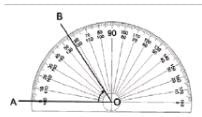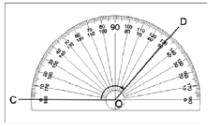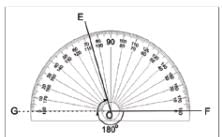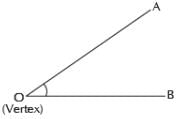Class 5 Exam > Class 5 Tests > Olympiad Test: Geometrical Shapes And Angles - 1 - Class 5 MCQ
Olympiad Test: Geometrical Shapes And Angles - 1 - Class 5 MCQ
Test Description
10 Questions MCQ Test - Olympiad Test: Geometrical Shapes And Angles - 1
Olympiad Test: Geometrical Shapes And Angles - 1 for Class 5 2025 is part of Class 5 preparation. The Olympiad Test: Geometrical Shapes And Angles - 1 questions and answers have been prepared
according to the Class 5 exam syllabus.The Olympiad Test: Geometrical Shapes And Angles - 1 MCQs are made for Class 5 2025 Exam.
Find important definitions, questions, notes, meanings, examples, exercises, MCQs and online tests for Olympiad Test: Geometrical Shapes And Angles - 1 below.
Solutions of Olympiad Test: Geometrical Shapes And Angles - 1 questions in English are available as part of our course for Class 5 & Olympiad Test: Geometrical Shapes And Angles - 1 solutions in
Hindi for Class 5 course.
Download more important topics, notes, lectures and mock test series for Class 5 Exam by signing up for free. Attempt Olympiad Test: Geometrical Shapes And Angles - 1 | 10 questions in 20 minutes | Mock test for Class 5 preparation | Free important questions MCQ to study for Class 5 Exam | Download free PDF with solutions
Detailed Solution for Olympiad Test: Geometrical Shapes And Angles - 1 - Question 1
Detailed Solution for Olympiad Test: Geometrical Shapes And Angles - 1 - Question 2
Detailed Solution for Olympiad Test: Geometrical Shapes And Angles - 1 - Question 3
Olympiad Test: Geometrical Shapes And Angles - 1 - Question 4
Which is closest to the size of angle AOB?
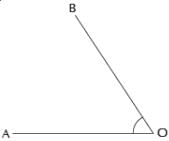
Detailed Solution for Olympiad Test: Geometrical Shapes And Angles - 1 - Question 4
Olympiad Test: Geometrical Shapes And Angles - 1 - Question 5
Which is closest to the size of angle COD?
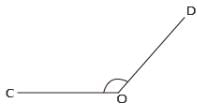
Detailed Solution for Olympiad Test: Geometrical Shapes And Angles - 1 - Question 5
Olympiad Test: Geometrical Shapes And Angles - 1 - Question 6
Which is closest to the size of reflex angle FOE?
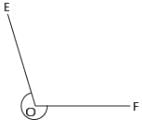
Detailed Solution for Olympiad Test: Geometrical Shapes And Angles - 1 - Question 6
Olympiad Test: Geometrical Shapes And Angles - 1 - Question 7
For the angle shown in the diagram, the arrow points to its :
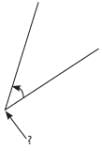
Detailed Solution for Olympiad Test: Geometrical Shapes And Angles - 1 - Question 7
Olympiad Test: Geometrical Shapes And Angles - 1 - Question 8
By using the three letters on the shape that define the angle, angle α is written as:
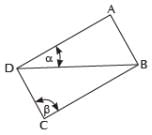
Detailed Solution for Olympiad Test: Geometrical Shapes And Angles - 1 - Question 8
Olympiad Test: Geometrical Shapes And Angles - 1 - Question 9
By using the three letters on the shape that define the angle, angle b is written as:
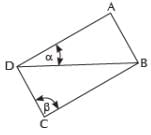
Detailed Solution for Olympiad Test: Geometrical Shapes And Angles - 1 - Question 9
Olympiad Test: Geometrical Shapes And Angles - 1 - Question 10
If two acute angles are added together, which of the following is NOT possible for their sum:
Detailed Solution for Olympiad Test: Geometrical Shapes And Angles - 1 - Question 10
Information about Olympiad Test: Geometrical Shapes And Angles - 1 Page
In this test you can find the Exam questions for Olympiad Test: Geometrical Shapes And Angles - 1 solved & explained in the simplest way possible.
Besides giving Questions and answers for Olympiad Test: Geometrical Shapes And Angles - 1, EduRev gives you an ample number of Online tests for practice
Download as PDF



